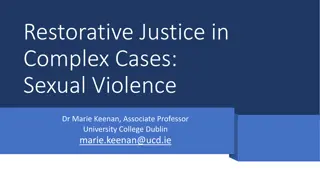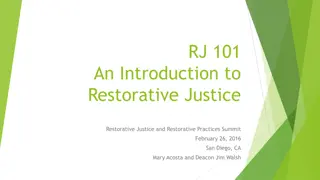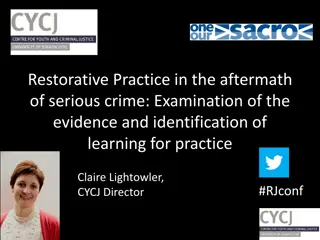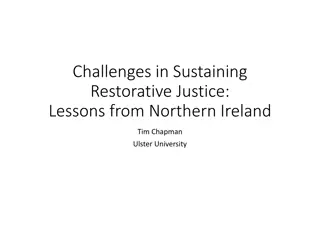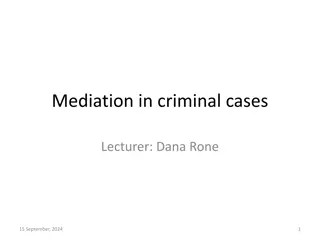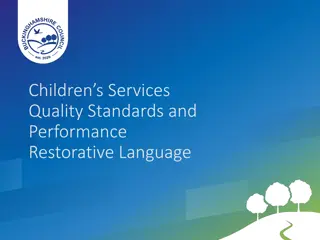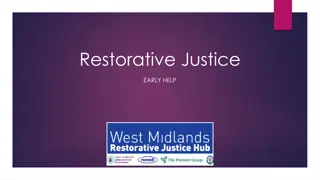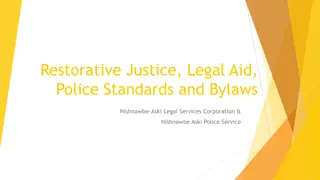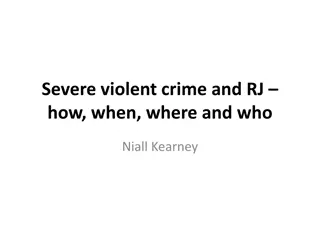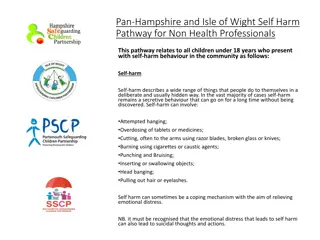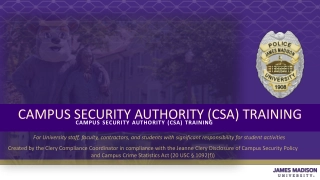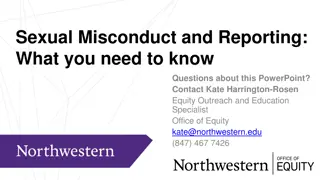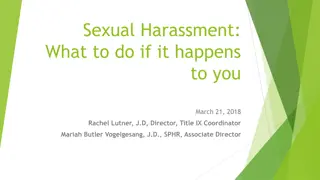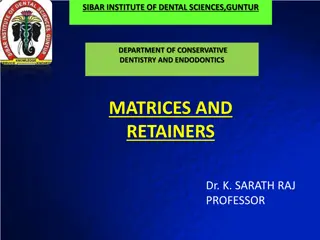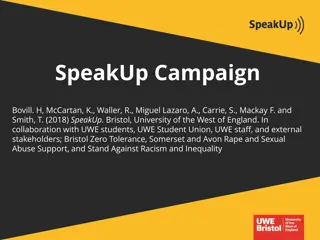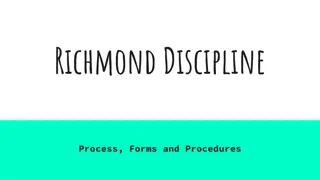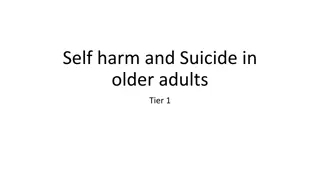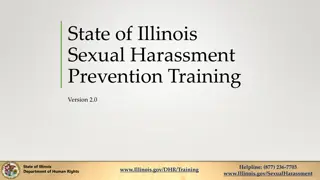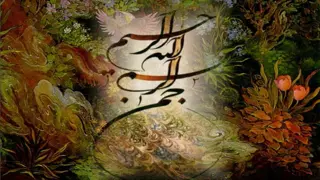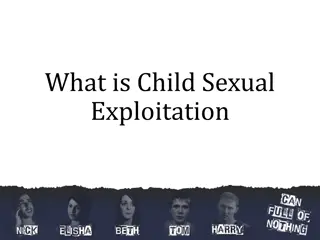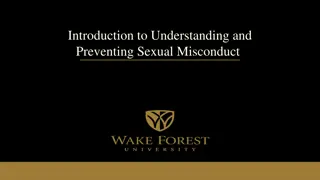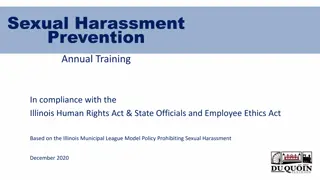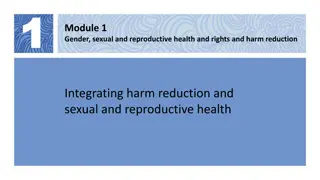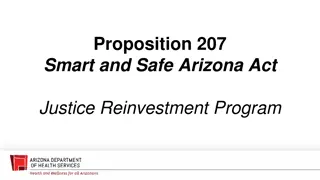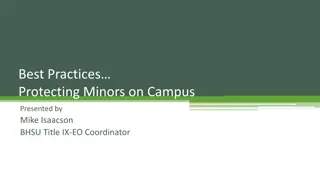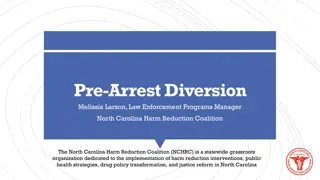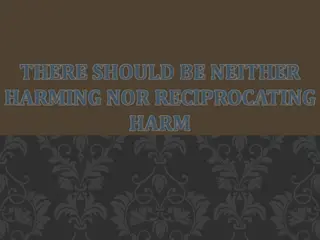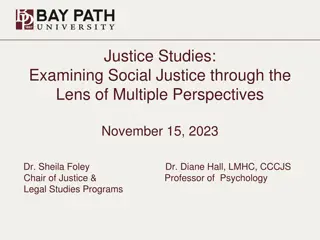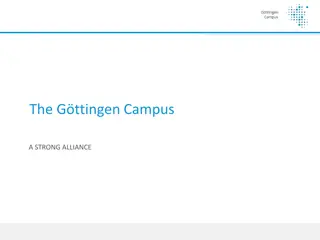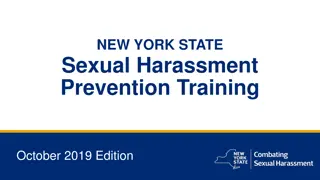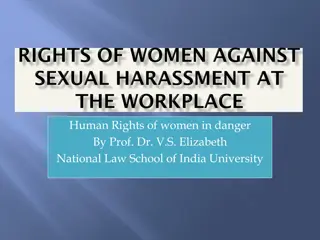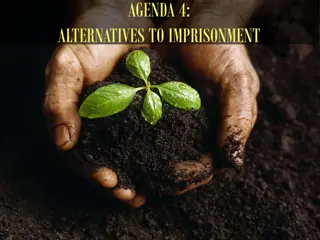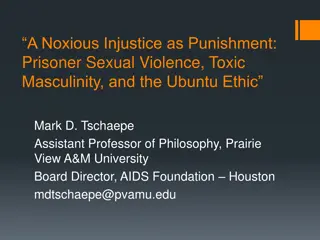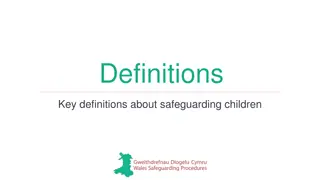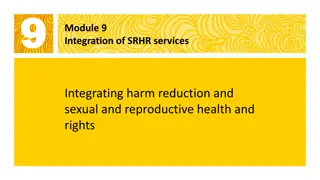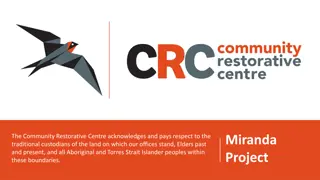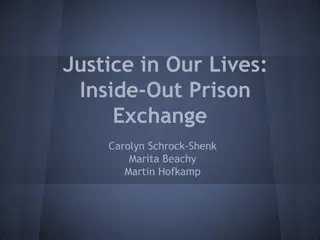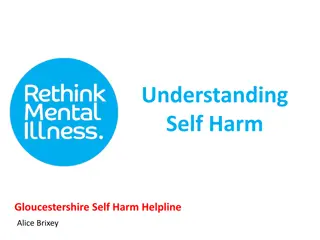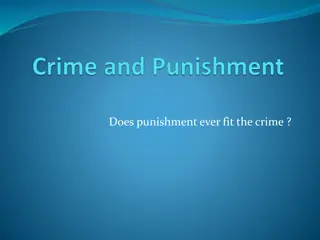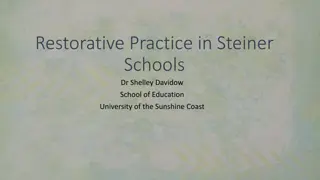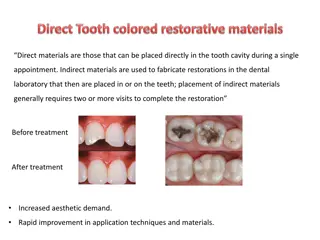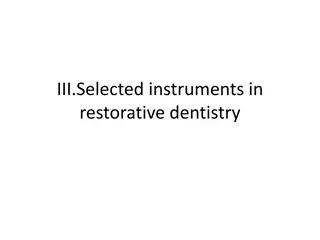Exploring Restorative Justice in Addressing Campus Sexual Harm
Restorative justice offers an informal approach to addressing campus sexual harm by involving harmed parties, offenders, and others in a collaborative decision-making process. It focuses on holding responsible parties accountable, repairing harm, rebuilding trust, and addressing underlying issues through processes like victim-offender mediation and conferencing. Emphasizing obligations, engagement, and addressing injustices, restorative justice differs from traditional justice by aiming to restore relationships rather than just determining guilt and punishment.
Download Presentation

Please find below an Image/Link to download the presentation.
The content on the website is provided AS IS for your information and personal use only. It may not be sold, licensed, or shared on other websites without obtaining consent from the author. Download presentation by click this link. If you encounter any issues during the download, it is possible that the publisher has removed the file from their server.
E N D
Presentation Transcript
RESTORATIVE JUSTICE: AN INFORMAL APPROACH TO CAMPUS SEXUAL HARM ROBERT RICO
Check-In Circle What is a word that describes how you are feeling this afternoon? What is something you are looking forward to today or this week?
Objectives 1 2 3 4 Define the term restorative justice (RJ). List four RJ processes Distinguish between traditional justice and RJ. Explain the uses of RJ practices for addressing harm.
Defining Restorative Justice Restorative justice is a collaborative decision-making process that includes harmed parties, offenders, and others who are seeking to hold offenders accountable
Holding Responsible Parties Accountable By: Accept and acknowledge responsibility for their offenses To the best of their ability, repair the harm they caused to harmed parties and the community Work to rebuild trust by showing understanding of the harm, addressing personal issues, and building positive social connections (Karp, 2015)
Two Different Views Traditional Justice Restorative Justice Crime or rule breaking is a violation of the law, the state or school policies. Violations create guilt. Justice requires the state to determine guilt and impose punishment. Crime or rule breaking is a violation of people and relationships. Violations create obligations. Justice involves all stakeholders to put things right.
Pillars of Restorative Justice HARMS AND NEEDS OBLIGATIONS ENGAGEMENT
To identify the injustice telling their stories To make things right exploring how the responsible party might begin to repair the harm Three Basic Objectives To address the underlying issues
Restorative Justice Processes Victim-Offender Mediation Conferencing Circles Impact Panels/Boards
Victim-Offender Mediation Promotes dialogue between the victim and the offender. The harmed party gets an opportunity to tell their story. The offender get a chance as well. A trained facilitator will guide the process but remains neutral.
Conferencing This process allows victim and offender to invite support groups to be part of the encounter. All stakeholders affected by the incident get an opportunity to tell their stories. An attempt to collaboratively resolve the conflict.
Derived from aboriginal peacemaking practices Community-based decision-making approach Circles The 5 C s of Circles Convene invitees, questions, materials Connect create trust and a sense of community Concern introduce topic of concern Collaborate encourage collaborative decision-making Close question that helps the circle identify takeaways
Consist of groups of individuals that represent the school or community. Appropriate for incidents that do not have a primary victim. Impact Panels/Boards The broader community suffers the harm. Surrogate victim/offender.
Preconference Preparation 01 02 03 04 Contact all parties involved Explain the process Ask for willingness to participate Do not proceed until all parties are ready
Restorative Conversations 1. What happened? 2. What impact did this incident have on you? 3. What was the hardest thing about this for you? 4. If the person responsible was here, is there anything you would like to say or ask them? 5. Is there anything that you can do to help meet your needs? 6. What would you like to see the other person do to repair the harm they have caused you? What happened? What were you thinking at the time? What have you thought about since? What impact has this had on you? Who else has been impacted and in what way? What could you have done differently? What needs to happen to make things right? How can we rebuild trust?
Participant Comment Restorative justice can heal the soul much better than jail time. My first time in the circle was very fulfilling; where there was anger before, now there is understanding.
Preconference Preparation 01 02 03 04 Contact all parties involved Explain the process, needs assessment Ask for willingness to participate Evaluate readiness
Legal Considerations Voluntariness is key (DOE) Takla v. Regents of the University of California Deliberate indifference University discouraged plaintiffs from formal process Shank v. Carleton College No deliberate indifference Plaintiffs chose to participate
Questions? Robert Rico, Ed.D. robert.rico@utsa.edu 210-313-2131
Resources Boyes-Watson, C., & Pranis, K. (2010). Heart of Hope Resource Guide: Using Peacemaking Circles to Develop Emotional Literacy, Promote Healing and Build Healthy Relationships. Boston, MA: Center for Restorative Justice at Suffolk University. Boyes-Watson, C., & Pranis, K. (2015). Circle forward: Building a restorative school community. St. Paul, MN: Living Justice Press. Karp, D. R. (2015). The little book of restorative justice for college and universities ,New York, NY: Good Books. Orcutt, M., Petrowski, P. M., Karp, D. R., & Draper, J. (2020). Restorative Justice Approaches to Informal Resolution of Student Sexual Misconduct. Van Ness, D. & Strong, K H. (2015). Restoring Justice: An Introduction to Restorative Justice, 5th Ed. Waltham, MA: Anderson Publishing. Zehr, H. (2002). The little book of restorative justice, Intercourse, PA: Good Books.


